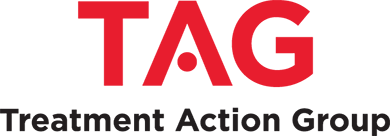Leadership Lacking in Move From 3×5 to Universal Access
The past year saw a number of post mortems about the World Health Organization’s “3×5” initiative to support countries in treating at least 50% of their HIV-infected populations in need of antiretroviral therapy. These commentaries ranged from almost gleeful schadenfreude, to a detailed yet in parts scathing evaluation commissioned by the Canadian government, to a series of activist-written country reports. The year 2006 also saw the untimely death of WHO Director General JW Lee, who staked his reputation on the 3×5 initiative, the advent of Kevin De Cock as new director of WHO’s HIV Department, and a tepid commitment by global and national leaders to move beyond “3×5” to achieve universal access to antiretroviral therapy (ART) for all who need it.
One particularly low point occurred at the UN’s General Assembly Special Session on AIDS (UNGASS) in June, when the African delegation, led by Egypt, Gabon, and South Africa — the last of which had been a dedicated foe of “3×5” since its inception — refused to lobby for global treatment targets in the UNGASS declaration.
However a turning point for South Africa may have been achieved in August 2006, when before a worldwide audience at the International AIDS Conference in Toronto, Mark Heywood of the AIDS Law Project called for the resignation of South African minister of health Manto Tshabalala-Msimang, who had spent the past five years stoutly defending the irrational HIV policies of South African President Thabo Mbeki. At the same time, in Cape Town, hundreds of activists from the Treatment Action Campaign (TAC) demonstrated for the rights of HIV-positive South African prisoners to access antiretroviral therapy.
Whether by coincidence or not, in mid-September the South African health minister was hospitalized in Johannesburg for a lung infection. In her absence South Africa’s deputy health minister Nozizwe Madlala-Routledge stated that government has been in “denial at the very highest level” over AIDS, commissioned a revised national plan to triple the number of people receiving ART and to halve the new HIV infection rate, and challenged the President to take an HIV test.
It is too soon to tell how durable and concrete the results of the apparent rapprochement between TAC and the South African government will be. But no one can doubt that the government’s turnaround owes an incalculable amount to the unrelenting activism of TAC over the past eight years, and this in turn demonstrates that strong activist movements can transform AIDS policy in countries with functioning democratic institutions. Whether the achievements of TAC can be duplicated in countries which lack full rights for civil society organizations remains to be seen.
In many ways the most difficult part of the worldwide effort to scale up antiretroviral therapy is just beginning. Some countries such as Botswana, Brazil, Malawi, Thailand, Uganda, and Zambia have made substantial progress on treating a significant proportion of their HIV infected populations. Many others are midway through scale-up efforts whose ultimate success remains unclear. Some countries with very large epidemics such as India, Nigeria, and Russia are doing poorly.
Even in countries making substantial progress towards more complete ART coverage the difficulties of keeping people already on treatment healthy and starting thousands more on therapy are daunting. Many people will begin to experience drug related toxicity as they enter the second or third year on ART. Most countries lack access to safer drugs such as tenofovir. Some five to ten percent of people on ART will need a new regimen due to antiretroviral treatment failure in the coming year, yet the treatment of choice — a ritonavir-boosted protease inhibitor such as lopinavir/r (Kaletra) — remains prohibitively expensive. ART programs for HIV infected children are rare.
What is needed? More intelligent activism at all levels, such as that illustrated so dramatically by TAC in 2006, is a prerequisite. Activists need to focus their efforts on pressuring national governments to set and to meet national treatment targets, and to monitor their progress, as demonstrated by the International Treatment Preparedness Coalition (ITPC) in its scathing series of reports entitled Missing the Target. Activists need to ensure that countries can access high-quality generic first- and second-line antiretroviral treatment for both adults and children. They need to pay more attention to the intersecting epidemics of HIV, tuberculosis (TB), and hepatitis B and C.
Activists need to focus on the needs of people with AIDS who need treatment now — both abroad and at home. Currently in South Carolina 350 people with HIV are on a waiting list for ART coverage from the state AIDS Drug Assistance Program. This shameful situation makes explicit the lack of anything like a national plan for AIDS prevention and treatment in the United States. It’s time for activists to link up their global and national work and to make alliances with others who should be part of the struggle for universal access to high quality health care for all. Twenty years after the foundation of ACT UP, the AIDS Coalition to Unleash Power, the need for accelerated, intensified, and more intelligent and targeted coalition-based activism is as clear as ever.
